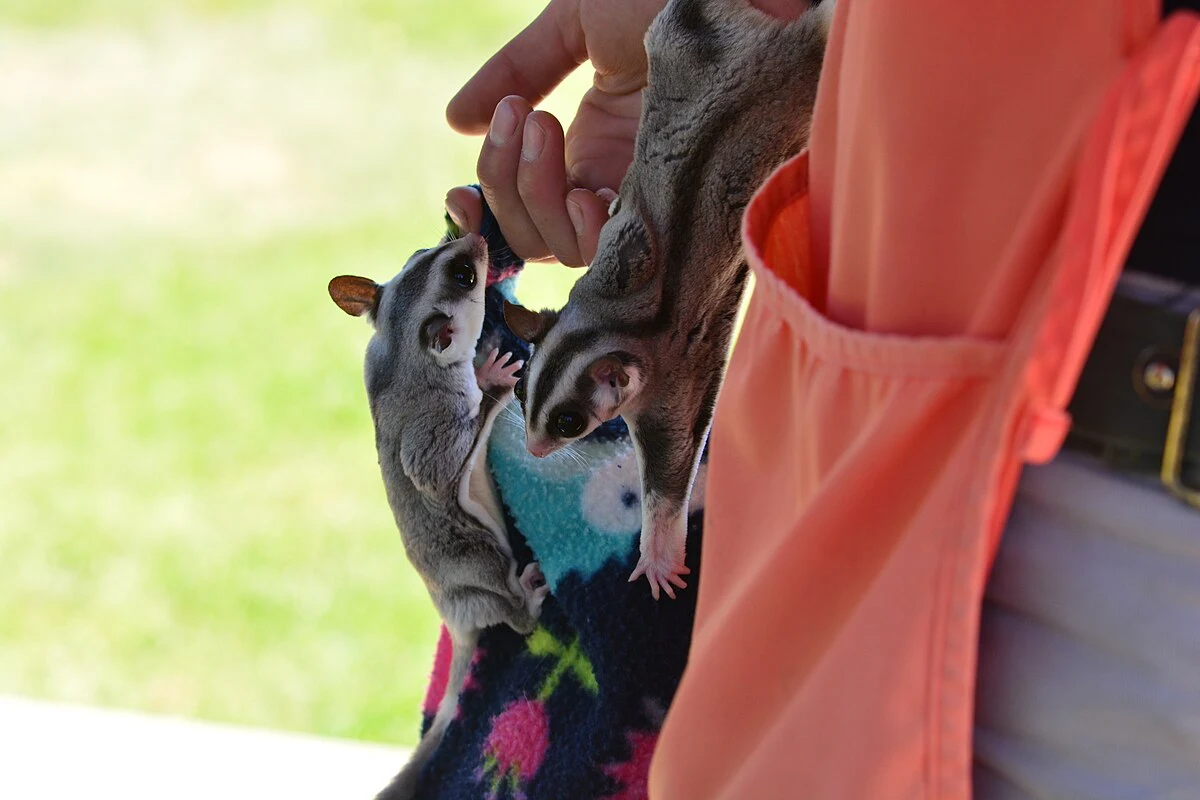Taking every procedure to groom sugar gliders is a move to ensure good health, happiness, and longevity of your sugar glider and it is crucial to understand the ins and outs of proper grooming.
Sugar gliders, the small and charismatic marsupials native to Australia, have stolen the hearts of many pets around the world. This is why in this extensive guide, we’ll explore various aspects of sugar glider grooming, from maintaining a clean environment to addressing coat care and nail maintenance.
Laying the Foundation to Groom Sugar Gliders
Before we dive into the grooming aspects specific to sugar gliders, let’s address the importance of maintaining a clean and hygienic living environment for your pet.
Key steps for a clean environment:
-
Cage Cleaning: Schedule a thorough cleaning of your sugar glider’s cage at least once a week. Remove all toys, dishes, and bedding, then use a pet-safe cleaner to sanitize the cage. Make sure to allow the cage to air dry before reassembling it.
-
Bedding and Nesting Materials: Replace bedding and nesting materials, like cage liners, fleece pouches, and other fabric items, weekly or more frequently as needed. This helps control odors and prevents the growth of harmful bacteria that can affect your sugar glider’s fur.
-
Food and Water Dishes: Remove any leftover food daily and wash the dishes with warm, soapy water to minimize bacterial buildup. Ensure that your sugar glider has access to clean, fresh water at all times.
Coat Care: Mastering Fur Maintenance
One of the distinctive features of sugar gliders is their silky, soft fur. Paying close attention to coat care is essential for promoting healthy skin and fur.
Essential coat care tips:
-
Brushing: Depending on your sugar glider, they may need occasional to regular brushing. Use a soft-bristled brush or a toothbrush with gentle motions to prevent pulling on the fur. A brushing session can also serve as a valuable bonding time with your pet.
-
Bathing: Sugar gliders are largely self-grooming and do not require frequent baths. However, if they become soiled or have a strong odor, you can gently clean their fur with a damp cloth or unscented baby wipes.
Avoid bathing them directly in water, as it can strip away the natural oils in their skin and cause irritation. -
Diet and Supplements: A balanced diet is vital for maintaining the health of your sugar glider’s coat. Provide a variety of fresh fruits, vegetables, and high-quality pelleted food, as well as necessary supplements like calcium and vitamins.
Consult your nutrition specialist for guidelines tailored to your pet’s unique needs. -
Observable Changes: Keep a close eye on your sugar glider’s coat and overall appearance. Signs of hair loss, dull fur, or skin irritation may indicate health issues that require a veterinarian’s attention.
Nail Maintenance: Trimming Your Sugar Glider’s Nails Safely
Proper nail care is an essential part of grooming your sugar glider. Long and overgrown nails can cause discomfort, and in some cases, lead to injuries, making it crucial to develop a nail-trimming routine.
Nail care steps:
-
Choose the Proper Tools: Invest in a pair of small, sharp nail clippers designed for small mammals or babies. Additionally, keep styptic powder, cornstarch, or a clotting agent on hand to stop bleeding in case a nail is accidentally cut too short.
-
Schedule Trimming: Monitor your sugar glider’s nails and trim them as needed, usually every 2-4 weeks. Signs that it’s time for trim include sharp nails or nails that start curling under.
-
Enlist Help: It’s often easier to trim your sugar glider’s nails with the aid of a friend or family member. One person can gently hold the sugar glider while the other trims the nails.
-
Technique: Hold your sugar glider securely, either by the scruff or gently wrapped in a soft cloth. Position the clippers at a 45-degree angle, trimming only the transparent tip of the nail. Avoid cutting the pinkish “quick,” as it contains blood vessels and nerves.
Conclusion
As a sugar glider owner, it’s your responsibility to provide your pet with the grooming care they need, from maintaining a clean environment and promoting proper coat care to ensuring regular nail maintenance.
Your diligence and attention to detail will contribute to a healthy, happy, and long-living companion. Always consult with a veterinarian experienced in treating sugar gliders for specific recommendations or if you have concerns about your pet’s grooming needs or general health.
